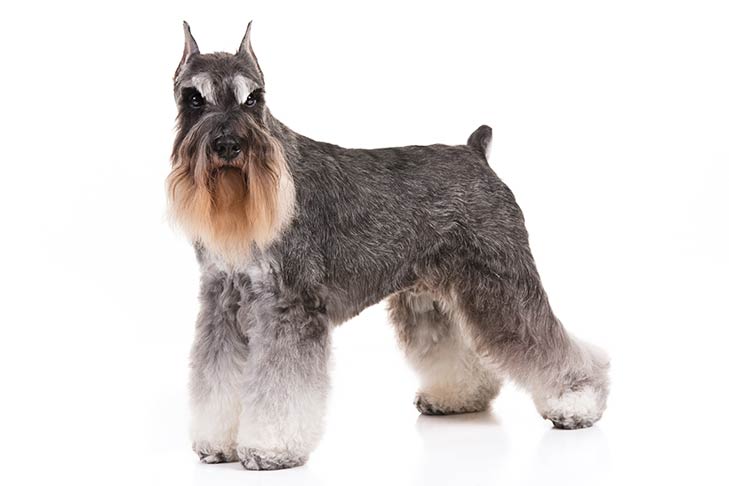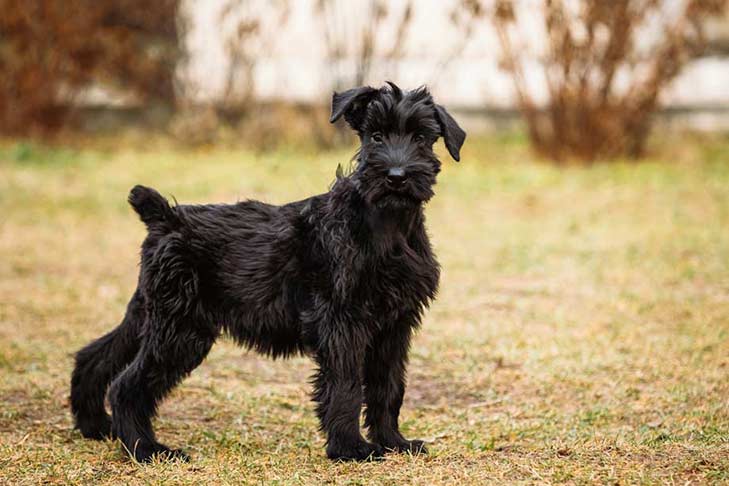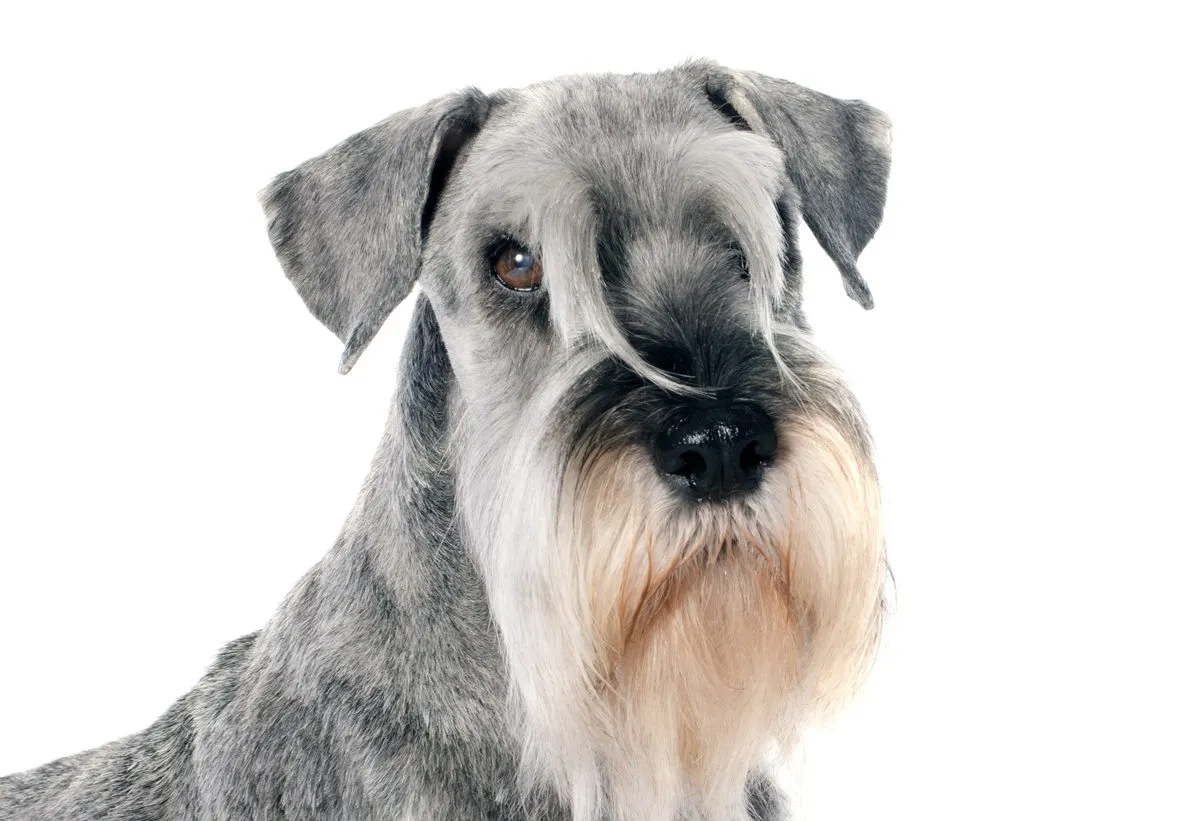The Natural Schnauzer is a beloved breed known for its distinct appearance and playful personality. One of its most defining features are its ears – perky, triangular flags that add to their overall charm. But beyond their aesthetic value, Schnauzer ears play a crucial role in the dog’s communication, health, and well-being. In this guide, we will explore the anatomy, growth, common issues, and proper care for Natural Schnauzer ears. By understanding the nuances of these unique appendages, you can provide the best possible care for your furry friend.
Understanding Natural Schnauzer Ear Set and Shape

The ear set and shape of a Natural Schnauzer are essential characteristics that contribute to its overall appearance and functionality. When looking at a Schnauzer, one of the first things you may notice is their erect, triangular-shaped ears. This unique shape has been carefully selected and bred into the breed over many generations.
The ideal placement of a Schnauzer’s ears is slightly above the level of the skull and pointing forward. This positioning allows for better sound reception and makes them appear more alert and attentive. The shape also serves a practical purpose, helping to funnel sound waves towards the ear canal.
Another defining aspect of a Schnauzer’s ears is their thickness and texture. The outer edges of the ear should be smooth and folded sharply towards the front of the head, giving them a distinct “prick” or “bat” shape. The texture should be wiry and stiff, providing the necessary support for the ears to stand upright.
The Role of Genetics in Natural Schnauzer Ear Set and Shape
As with many other breed traits, the shape and set of a Schnauzer’s ears are determined by genetics. Responsible breeders carefully select and pair dogs with desirable ear shapes to maintain the breed standard. However, it is important to note that ear shape and set can also be influenced by environmental factors, such as early handling and grooming.
The Importance of Early Handling for Natural Schnauzer Ears

Early socialization and handling are crucial for all aspects of a dog’s development, including their ears. From the age of 2-3 weeks, puppies should be gently handled and have their ears touched and manipulated regularly. This helps them become accustomed to human touch and prepares them for future grooming sessions.
Failure to handle a puppy’s ears at an early age can result in them being overly sensitive or fearful of having their ears touched. This can make grooming and ear cleaning a challenging and stressful experience for both the dog and its owner. Regular handling and positive reinforcement can prevent these issues from arising.
Proper Ear Cropping and Taping Techniques
Some Schnauzers may undergo ear cropping, a cosmetic procedure where a portion of the ear is surgically removed to achieve a specific shape and size. While this practice is becoming less common and is even banned in some countries, it is still prevalent in certain parts of the world.
If you choose to have your Schnauzer’s ears cropped, it is essential to work with a reputable and experienced veterinarian. They will be able to perform the procedure safely and correctly.
After the surgery, the ears will need to be taped to maintain their upright position. This involves wrapping the ears with medical tape or using a device called an “ear brace” to keep them in place. It is crucial to follow your vet’s instructions carefully to avoid any complications and ensure proper healing. If done correctly, the ears should stand erect within a few weeks.
Natural Schnauzer Ear Care: Tips for Keeping Them Clean and Healthy
Schnauzers, like most breeds, require regular ear care to keep them clean and healthy. However, due to their unique ear shape and texture, they may need more attention and specialized care.
Cleaning
The first step in proper ear care is regular cleaning. Schnauzers can be prone to excess wax buildup, which can lead to ear infections if not properly addressed. To clean your Schnauzer’s ears, follow these steps:
- Start by inspecting the outer ear for any visible debris or excessive wax.
- Use a cotton ball or pad soaked in an ear cleaning solution approved by your vet. Avoid using q-tips as they can push debris further into the ear canal.
- Gently wipe the inside of the ear, taking care not to go too deep.
- Use a dry cotton ball to remove any excess moisture.
- Repeat the process on the other ear.
It is essential to avoid over-cleaning your Schnauzer’s ears as it can disrupt the natural balance of bacteria and cause irritation. Consult with your veterinarian for a recommended cleaning schedule based on your dog’s individual needs.
Hair Plucking
Schnauzers have hair in their ear canals, which can trap dirt, moisture, and debris, leading to ear infections. It is crucial to pluck this hair regularly to prevent issues from arising. Some owners may choose to have a professional groomer handle this task, while others opt to do it themselves. If you plan on doing it at home, follow these steps:
- Start by applying some ear powder to help grip the hair and make it easier to pluck.
- Using your fingers or tweezers, gently pull out the visible hair from the ear canal.
- Be careful not to go too deep as you could damage the delicate ear canal lining.
- Continue until all visible hair has been removed.
Plucking may be uncomfortable for your Schnauzer, so make sure to take frequent breaks and offer plenty of praise and treats to keep them calm and cooperative.
Natural Schnauzer Ear Problems: Identification and Treatment

Despite proper care, Natural Schnauzers may still experience some ear issues. It is crucial to be aware of the signs and symptoms to identify and address these problems promptly.
Ear Infections
Ear infections are a common issue for all dog breeds, including Schnauzers. They occur when bacteria or yeast overgrow in the ear canal, causing inflammation, discomfort, and possible hearing loss.
Signs of an ear infection may include:
- Redness and swelling of the ear.
- Excessive scratching or rubbing of the ear.
- A foul odor coming from the ear.
- Yellow, brown, or bloody discharge.
- Head shaking or tilting.
- Loss of balance or coordination.
If you notice any of these symptoms, it is essential to consult with your vet for a proper diagnosis and treatment plan. Ear infections can be treated with medication, cleaning solutions, and sometimes, dietary changes.
Other Common Issues
Other issues that may arise with Natural Schnauzer ears include:
- Ear mites – tiny parasites that can cause severe itching and irritation. They can be treated with prescription medication.
- Hematomas – blood-filled blisters that appear on the ear flap due to excessive head shaking or scratching. These may require surgical intervention if they do not heal on their own.
- Allergies – some Schnauzers may have allergies that can affect their ears, causing itching and inflammation. Identifying and eliminating the allergen can help alleviate the symptoms.
Natural Schnauzer Ears: A Unique Feature of the Breed

The Natural Schnauzer’s ears are not just a physical feature but an integral part of their overall well-being. Their unique shape and placement serve practical purposes, while their thick, wiry texture adds to their charm. Proper handling, care, and attention are necessary to ensure healthy and happy ears for your Schnauzer.
In conclusion, the ears of a Natural Schnauzer are a vital and distinctive component of the breed. Understanding their anatomy, growth, and proper care is crucial for any owner looking to provide the best possible care for their furry friend. With these insights and tips in mind, you can keep your Schnauzer’s ears clean, healthy, and perky – just the way they should be.
Natural Schnauzer Ear Development: A Comprehensive Guide
When it comes to Natural Schnauzers, their ear development is a fascinating aspect of their growth. Understanding how their ears develop can help owners appreciate this unique breed feature even more.
Puppies
At birth, Natural Schnauzer puppies’ ears are floppy and folded over. As they grow and develop, usually within the first few weeks, the ears start to stand up. This process varies from puppy to puppy, with some ears standing up fully by eight weeks of age, while others may take a bit longer.
Teething Stage
The teething stage, which typically occurs around four to six months of age, can impact ear positioning in Natural Schnauzers. During this time, the cartilage in the ears may soften as the adult teeth come in. This can cause the ears to temporarily droop or become asymmetrical. However, as the teething process finishes, the ears usually regain their upright position.
Final Development
By the time a Natural Schnauzer reaches six to nine months of age, their ears should have fully developed and stood up permanently. It is essential during this period to avoid any trauma to the ears, such as rough play or excessive handling, as this can affect the final shape and position of the ears.
Understanding the various stages of Natural Schnauzer ear development can help owners track their puppy’s growth and ensure that their ears mature correctly.
Care and Support
During the ear development stages, it is crucial to provide proper support and care to help the ears stand up correctly. Ensuring a healthy diet, regular vet check-ups, and avoiding unnecessary stress on the ears can contribute to optimal ear development in Natural Schnauzer puppies.
Understanding Natural Schnauzer Ear Set and Shape

The Natural Schnauzer breed is known for its distinctive ear set and shape, which adds to its overall charm and character. Understanding the standard ear characteristics of this breed can help owners appreciate and recognize these features.
Ear Set
Natural Schnauzer ears are set high on the head, giving them an alert and expressive look. The ears are traditionally left natural, meaning they are not cropped or altered in any way. This natural ear set allows for excellent hearing capability, which is essential for this breed historically used for tasks like ratting and guarding.
Shape and Texture
The ears of a Natural Schnauzer are medium-sized, V-shaped, and fold forward close to the cheeks. The tips should reach the outer corners of the eye when pulled forward. The texture of the ear is thick and wiry, matching the coat of the Schnauzer and adding to their distinctive appearance.
Expression and Communication
Natural Schnauzer ears are not just for show but also play a crucial role in expressing emotions and communicating. When a Schnauzer is alert or excited, their ears will stand erect and move slightly forward. In contrast, when they are relaxed or submissive, the ears may fall back against the head.
Understanding the natural ear set and shape of the Natural Schnauzer breed can help owners recognize and appreciate this defining characteristic in their furry companions.
Training Tips
As a Natural Schnauzer owner, it is essential to respect and embrace your dog’s natural ear set. Avoiding unnecessary alterations or cropping can preserve the breed’s unique look and maintain their ability to communicate through their ears effectively.
The Importance of Early Handling for Natural Schnauzer Ears

Early handling and socialization play a crucial role in shaping a Natural Schnauzer’s behavior and temperament. Similarly, early handling of their ears is essential to ensure they remain comfortable with touch and inspection throughout their lives.
Gentle Touch
From a young age, gently touching and manipulating a Natural Schnauzer’s ears can help them get accustomed to the sensation. Starting with short and positive interactions, such as gentle ear massages during cuddle time, can create a positive association with ear handling.
Positive Reinforcement
Offering treats and praise while handling a Schnauzer’s ears can reinforce good behavior and make the experience enjoyable for them. Positive reinforcement can help build trust and confidence, making future ear care routines easier and stress-free.
Regular Inspections
Regularly inspecting a Natural Schnauzer’s ears for signs of redness, irritation, or wax buildup can help detect any issues early on. By incorporating ear inspections into grooming sessions or playtime, owners can ensure that their Schnauzer remains comfortable with ear touch and examination.
Vet Visits
During routine vet visits, ask your veterinarian to include ear examinations as part of the check-up. This can help identify any potential problems or concerns and address them promptly. Additionally, it allows veterinarians to monitor the overall health and condition of a Natural Schnauzer’s ears.
Training Tools
Utilizing training tools, such as ear wipes or solutions recommended by your vet, can aid in maintaining clean and healthy ears. Gradually introducing these tools to your Schnauzer and associating them with positive experiences can make ear care routines more manageable in the long run.
By prioritizing early handling and positive experiences with ear care, owners can ensure that their Natural Schnauzer remains comfortable and cooperative when it comes to ear-related activities throughout their lifetime.
Natural Schnauzer Ear Care: Tips for Keeping Them Clean and Healthy
Proper ear care is essential to maintain the health and comfort of Natural Schnauzer ears. Regular cleaning and inspection can help prevent ear infections and other issues, ensuring that your furry companion stays happy and healthy.
Cleaning Techniques
When cleaning your Natural Schnauzer’s ears, it is crucial to use gentle techniques to avoid causing discomfort or injury. Start by gently lifting the ear flap and using a veterinarian-approved ear cleaning solution to remove dirt, wax, and debris. Avoid inserting cotton swabs or other tools deep into the ear canal, as this can damage the delicate structures inside.
Frequency of Cleaning
The frequency of ear cleaning may vary depending on your dog’s individual needs. Some dogs may require more frequent cleanings, especially those prone to ear infections or excessive wax buildup. As a general guideline, aim to clean your Schnauzer’s ears once a week or as recommended by your veterinarian.
Signs of Ear Problems
Regularly inspecting your Natural Schnauzer’s ears can help you identify any potential issues early on. Watch out for signs of redness, swelling, discharge, odor, or excessive scratching, as these could indicate an ear infection or other underlying problems. If you notice any concerning symptoms, consult your veterinarian for proper diagnosis and treatment.
Professional Grooming
In addition to regular home cleanings, consider incorporating professional grooming sessions into your Natural Schnauzer’s care routine. Professional groomers have the expertise and tools to thoroughly clean and inspect your dog’s ears, ensuring they remain healthy and free of any hidden issues.
Preventative Care
Taking preventative measures can help protect your Natural Schnauzer’s ears from common problems. Keep their ears dry and well-ventilated, especially after bathing or swimming, to prevent moisture-related infections. Additionally, regularly trimming hair around the ears can reduce the risk of matting and bacteria buildup.
By following these ear care tips and incorporating them into your Schnauzer’s grooming routine, you can help keep their ears clean, healthy, and comfortable for years to come.
Natural Schnauzer Ear Problems: Identification and Treatment

While Natural Schnauzer ears are unique and charming, they are also prone to certain issues that owners should be aware of. Understanding common ear problems in this breed, along with their identification and treatment, is crucial for maintaining your dog’s ear health.
Ear Infections
Ear infections are a prevalent issue among Natural Schnauzers due to factors like their floppy ears and hair growth in the ear canal. Symptoms of an ear infection may include redness, swelling, odor, discharge, and discomfort. If you suspect your Schnauzer has an ear infection, consult your veterinarian for a proper diagnosis and treatment plan, which may involve ear drops or oral medication.
Wax Buildup
Excessive wax buildup can occur in Natural Schnauzer ears, leading to blockages and discomfort. Regularly cleaning your dog’s ears can help prevent wax accumulation, but if you notice a significant buildup, consult your vet for guidance on safe removal methods. Avoid using sharp tools or solutions that may irritate the ear canal.
Allergies
Natural Schnauzers are prone to allergies, which can manifest as ear irritation and itching. Allergic reactions may cause inflammation, redness, and increased ear scratching. Identifying and addressing the underlying allergy triggers, such as certain foods or environmental factors, is essential to manage ear-related symptoms effectively.
Foreign Objects
Foreign objects, like grass seeds or small insects, can sometimes become lodged in a Natural Schnauzer’s ears, causing discomfort and potential infection. If you suspect your dog has a foreign object in their ear, refrain from attempting to remove it yourself and seek veterinary assistance promptly. Trying to remove foreign objects without proper training can lead to further complications.
Hearing Loss
Chronic and untreated ear problems can potentially result in hearing loss for Natural Schnauzers. Monitoring your dog’s ear health, seeking prompt veterinary care for any identified issues, and following preventative ear care measures can help preserve their hearing function and overall well-being.
By staying vigilant, addressing ear problems promptly, and working closely with your veterinarian, you can help keep your Natural Schnauzer’s ears healthy and free from common issues that may arise.
Natural Schnauzer Ears: A Unique Feature of the Breed

The ears of a Natural Schnauzer are not just a physical trait; they are a defining characteristic that sets this breed apart. From their development and set to their communication and expression, Natural Schnauzer ears play a significant role in the breed’s overall charm and personality.
Historical Significance
Historically, Natural Schnauzer ears served a practical purpose in their work as versatile farm dogs. Their upright, V-shaped ears allowed them to hear and respond to various commands while herding livestock, catching vermin, and guarding property. Today, while their roles may have evolved, their ears remain a distinctive feature rooted in their working past.
Communication Tool
In addition to their functional role, Natural Schnauzer ears are also essential for communication. These expressive ears can convey a range of emotions, from curiosity and excitement to fear and relaxation. By observing their ear positions and movements, owners can better understand their Schnauzer’s feelings and intentions.
Aesthetic Appeal
Beyond their utility, Natural Schnauzer ears contribute to the breed’s aesthetic appeal and charm. The unique shape, texture, and set of their ears complement their wiry coat and robust build, creating a harmonious and balanced appearance. Whether alert and perked up or relaxed and folded back, their ears add to the overall elegance of the breed.
Breed Standard
The natural ear set and shape of the Natural Schnauzer are upheld as part of the breed standard by kennel clubs and breed organizations. Preserving and showcasing the distinct ear characteristics of the Schnauzer not only honors the breed’s heritage but also ensures the continuation of its unique features for generations to come.
Bonding and Companionship
For Natural Schnauzer owners, their dogs’ ears hold a special significance beyond aesthetics and function. Through grooming, care, and bonding activities like ear rubs and massages, owners can strengthen their relationship with their Schnauzer while promoting trust and affection. The act of caring for their ears becomes a shared experience that deepens the bond between human and canine companions.
Natural Schnauzer ears are more than just physical features; they are emblematic of a rich history, effective communication, and shared camaraderie between dogs and their owners. Embracing and celebrating these unique ears enhances the joy of owning and appreciating this exceptional breed.
Conclusion
In conclusion, Natural Schnauzer ears are a remarkable and distinctive feature of this beloved breed. From the fascinating journey of ear development in puppies to the importance of early handling and care, understanding and appreciating these unique ears play a vital role in responsible ownership.
By recognizing the natural ear set and shape of the Natural Schnauzer, owners can uphold breed standards, promote healthy ear development, and enhance communication with their furry companions. Regular ear care, attentive monitoring for potential problems, and prompt veterinary attention when needed are essential aspects of maintaining optimal ear health in Schnauzers.
As guardians of this special breed, it is our responsibility to cherish and preserve the defining characteristics, such as their ears, that make Natural Schnauzers truly one-of-a-kind. By embracing their ears as a symbol of history, communication, and companionship, we enrich our bond with these loyal and delightful dogs, making the connection between human and Schnauzer even more profound and meaningful.
